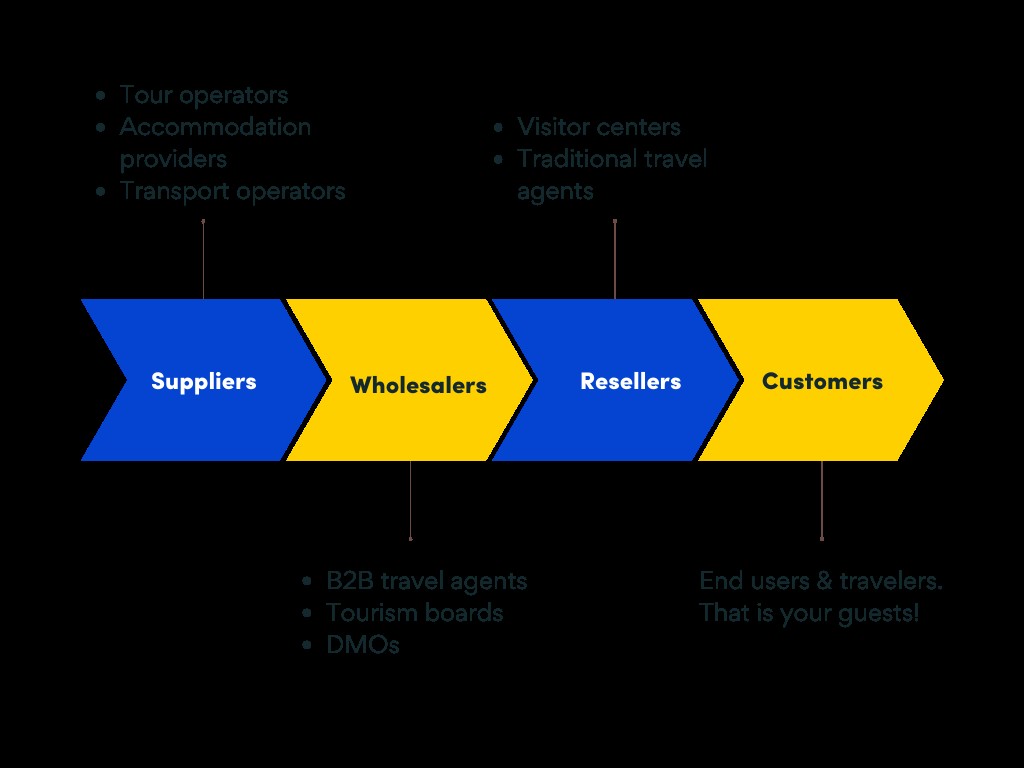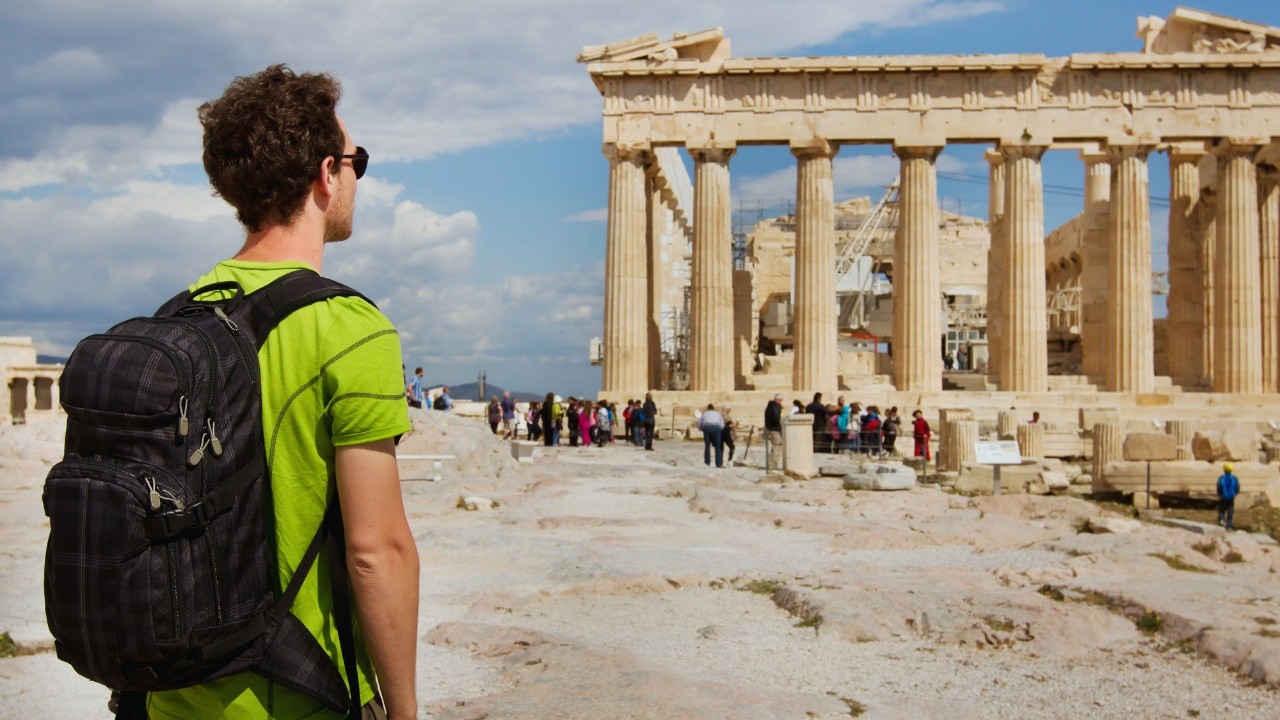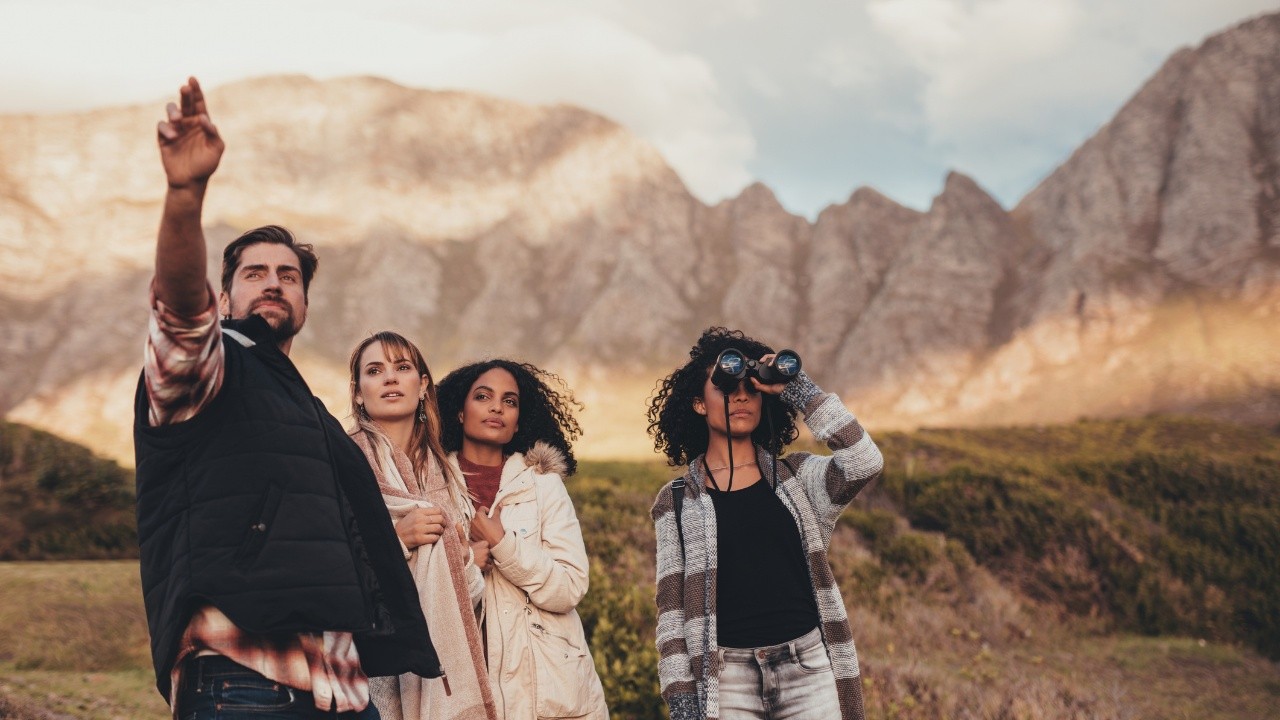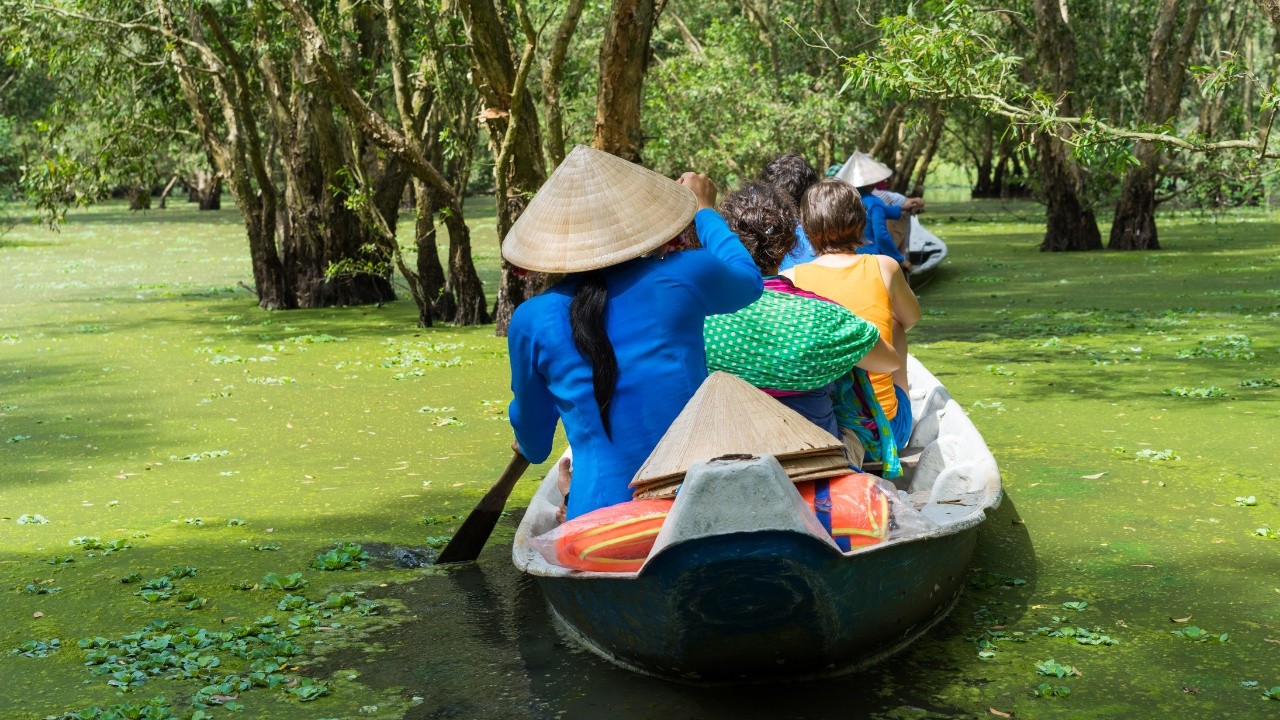Are you ready to unlock the secrets to tourism success in Vietnam? Tourism channels are the lifeblood of the industry, connecting travelers with unforgettable experiences. SIXT.VN understands the Vietnamese tourism landscape and offers solutions to maximize your reach and impact.
1. What is the Significance of Tourism Channels in the Tourism Industry?
Tourism channels are crucial because they connect travel suppliers with potential customers, facilitating the flow of information, reservations, and payments. Effective tourism distribution ensures businesses reach the right audience, optimize bookings, and enhance the overall travel experience. According to research from the Vietnam National Administration of Tourism in 2023, businesses with diversified distribution channels experienced a 30% increase in bookings compared to those relying on a single channel.
Tourism channels are the conduits through which travel products and services reach consumers. This involves various intermediaries, each contributing to the value chain. These channels range from traditional travel agencies to online platforms and direct sales efforts. The core function of these channels is to ensure that travel experiences are accessible and appealing to a broad audience.
- Connecting Suppliers and Consumers: Tourism channels bridge the gap between those who offer travel products (hotels, tour operators, airlines) and those who seek them.
- Facilitating Information Flow: They provide travelers with detailed information about destinations, accommodations, activities, and transportation options.
- Enabling Bookings and Payments: Tourism channels enable seamless booking processes and secure payment transactions, simplifying the travel planning process.
- Enhancing Travel Experience: By providing comprehensive support and resources, these channels improve the overall quality of the travel experience, leading to greater customer satisfaction.
 Tourism distribution explained
Tourism distribution explained
2. How Have Tourism Distribution Channels Evolved Over Time?
The evolution of tourism distribution channels has transitioned from offline travel agencies to a complex online ecosystem, driven by technological advancements and changing consumer behavior. Online travel agencies (OTAs), social media, and direct booking platforms have transformed how travelers discover and book experiences.
The transformation of tourism distribution can be characterized by a shift from traditional, offline methods to dynamic, online platforms. This evolution has been shaped by the rise of the internet, mobile technology, and changing consumer expectations.
- Offline Channels: Historically, travel agencies were the primary point of contact for travelers, offering personalized service and expert advice.
- Rise of OTAs: Online travel agencies like Booking.com and Expedia emerged as powerful intermediaries, providing a vast selection of accommodations, flights, and activities.
- Social Media Influence: Platforms like Instagram and Facebook have become key sources of travel inspiration, influencing booking decisions and shaping travel trends.
- Direct Booking Platforms: Many hotels and tour operators now offer direct booking options on their websites, providing greater control over pricing and customer relationships.
 Offline vs online tourism distribution channels
Offline vs online tourism distribution channels
3. What are the Key Types of Direct Tourism Distribution Channels?
Direct distribution channels involve selling travel products directly to customers, eliminating intermediaries. Key direct channels include company websites, social media platforms, email marketing, and mobile apps. According to a 2022 study by the Pacific Asia Travel Association (PATA), direct bookings through company websites have increased by 40% due to enhanced user experience and personalized offers.
Direct distribution channels allow tourism businesses to interact directly with their customers, building brand loyalty and providing personalized experiences. These channels offer greater control over pricing, inventory, and customer data.
- Company Websites: A well-designed website with a robust booking system is a powerful tool for direct sales, offering real-time availability and secure payment processing.
- Social Media Platforms: Platforms like Instagram and Facebook enable businesses to showcase their offerings, engage with potential customers, and facilitate direct bookings.
- Email Marketing: Targeted email campaigns can drive repeat bookings and promote special offers to a segmented customer base.
- Mobile Apps: Mobile apps provide a convenient way for customers to book travel products on the go, enhancing the overall booking experience.
 Tourism distribution channels
Tourism distribution channels
3.1. How Effective are Company Websites as Direct Tourism Channels?
Company websites are effective direct tourism channels due to their ability to offer detailed information, secure booking processes, and direct customer interaction. For instance, SIXT.VN’s website provides comprehensive information on Hanoi tourism, airport transfer services, and hotel booking options, enhancing user experience and driving direct bookings.
Company websites are fundamental in direct distribution, acting as a primary interface between the business and the customer. They offer a platform to showcase offerings, provide detailed information, and facilitate direct bookings.
- Comprehensive Information: Websites can provide in-depth details about destinations, accommodations, activities, and services, helping customers make informed decisions.
- Secure Booking Processes: Modern booking systems offer secure payment processing and real-time availability, ensuring a seamless booking experience.
- Direct Customer Interaction: Websites enable businesses to interact directly with customers, addressing their queries and providing personalized support.
- Brand Building: A well-designed website enhances brand credibility and builds trust with potential customers, driving direct sales.
 Tourism websites
Tourism websites
3.2. What Role Does Social Media Play in Direct Tourism Distribution?
Social media platforms are crucial in direct tourism distribution by inspiring travel, showcasing experiences, and facilitating direct bookings through features like shoppable posts. Statistics from Statista in 2023 indicate that 55% of travelers use social media for travel inspiration, making it a vital channel for direct engagement and sales.
Social media platforms have emerged as powerful tools for direct tourism distribution, offering businesses the opportunity to engage with potential customers, showcase their offerings, and drive direct bookings.
- Travel Inspiration: Platforms like Instagram and Pinterest inspire travelers with visually appealing content, influencing their travel decisions.
- Showcasing Experiences: Businesses can showcase their offerings through high-quality images and videos, highlighting the unique aspects of their products and services.
- Direct Bookings: Features like shoppable posts and story links enable businesses to facilitate direct bookings, creating a seamless path from inspiration to purchase.
- Customer Engagement: Social media platforms provide a space for businesses to engage with their customers, addressing their queries and building brand loyalty.
3.3. Why is Email Marketing Still Important in Tourism Distribution?
Email marketing remains a high-ROI channel in tourism distribution due to its ability to reach past customers with personalized offers and targeted information. A study by the Direct Marketing Association in 2022 reported that email marketing delivers an ROI of 122%, highlighting its effectiveness in customer retention and conversion.
Email marketing remains a highly effective channel in tourism distribution due to its ability to reach past customers, nurture leads, and promote special offers.
- Reaching Past Customers: Email campaigns can be used to target past customers with personalized offers, encouraging repeat bookings and building brand loyalty.
- Nurturing Leads: Email marketing can nurture leads by providing valuable information about destinations, accommodations, and activities, guiding them through the booking process.
- Promoting Special Offers: Targeted email campaigns can promote special offers and discounts, driving immediate bookings and increasing revenue.
- Personalized Communication: Email marketing enables businesses to personalize their communication, addressing customers by name and tailoring content to their specific interests.
 Email marketing effectiveness
Email marketing effectiveness
3.4. How Do Mobile Apps Enhance Direct Tourism Distribution?
Mobile apps enhance direct tourism distribution by providing a convenient platform for booking, delivering real-time updates, and enhancing the travel experience with features like audio guides. According to a 2023 report by Allied Market Research, mobile travel booking is expected to grow by 15% annually, underscoring the importance of mobile apps in tourism.
Mobile apps offer a direct line to consumers’ pockets, providing a convenient platform for booking travel products and enhancing the overall travel experience.
- Convenient Booking Platform: Mobile apps enable customers to book travel products on the go, enhancing the booking experience and driving direct sales.
- Real-Time Updates: Mobile apps can deliver real-time updates and notifications, keeping customers informed about flight changes, weather conditions, and other important information.
- Enhanced Travel Experience: Mobile apps can enhance the travel experience with features like audio guides, maps, and augmented reality experiences, providing added value to customers.
- Customer Loyalty: By providing a seamless and personalized experience, mobile apps can build customer loyalty and drive repeat bookings.
4. What are the Advantages and Disadvantages of Indirect Tourism Distribution Channels?
Indirect distribution channels, such as OTAs and travel agents, offer broad reach but come with challenges like high commissions and loss of direct customer relationships. Understanding these trade-offs is crucial for a balanced distribution strategy.
Indirect distribution channels involve using intermediaries to reach customers. While this approach can expand reach and visibility, it also comes with challenges such as reduced margins and loss of direct customer relationships.
-
Advantages:
- Broad Reach: OTAs and travel agents have extensive networks and marketing capabilities, enabling businesses to reach a wider audience.
- Marketing Support: Intermediaries often provide marketing support, promoting travel products through their own channels.
- Last-Minute Bookings: OTAs can help fill last-minute availability, maximizing revenue.
-
Disadvantages:
- High Commissions: Intermediaries charge commissions, reducing profit margins.
- Loss of Direct Customer Relationships: Businesses lose direct control over customer relationships, making it difficult to build brand loyalty.
- Pricing Pressure: OTAs often exert pricing pressure, forcing businesses to lower their prices to remain competitive.
 Indirect tourism distribution channels
Indirect tourism distribution channels
4.1. How Do Online Travel Agencies (OTAs) Impact Tourism Distribution?
OTAs such as Booking.com and Expedia significantly impact tourism distribution by offering extensive reach and sophisticated marketing capabilities, but they also pose challenges such as high commissions and reduced direct customer interaction. According to a 2023 report by Phocuswright, OTAs account for approximately 40% of online travel bookings globally.
Online travel agencies (OTAs) have become dominant players in the tourism distribution landscape, offering extensive reach, sophisticated marketing capabilities, and the ability to bundle various travel components into a single purchase.
- Extensive Reach: OTAs have vast customer bases and marketing networks, enabling businesses to reach a wider audience.
- Sophisticated Marketing Capabilities: OTAs invest heavily in marketing, promoting travel products through various channels.
- Bundling: OTAs can bundle flights, accommodations, and activities into a single purchase, offering convenience to customers.
- High Commissions: OTAs charge commissions, reducing profit margins for businesses.
- Reduced Direct Customer Interaction: Businesses lose direct control over customer relationships, making it difficult to build brand loyalty.
4.2. What is the Role of Traditional Travel Agents in Modern Tourism?
Traditional travel agents play a key role in modern tourism by offering personalized service and expertise, particularly for complex itineraries and luxury travel. A survey by the American Society of Travel Advisors (ASTA) in 2022 found that customers who use travel agents report higher satisfaction levels and are more likely to recommend their services.
Traditional travel agents remain important players in the tourism distribution system, offering personalized service and expertise, particularly for complex itineraries and luxury travel.
- Personalized Service: Travel agents provide personalized service, tailoring travel plans to meet the specific needs and preferences of their customers.
- Expertise: Travel agents have in-depth knowledge of destinations, accommodations, and activities, providing valuable advice and recommendations.
- Complex Itineraries: Travel agents excel at selling complex itineraries, such as multi-city trips and customized tours.
- Luxury Travel: Travel agents cater to the luxury travel market, offering high-end accommodations and exclusive experiences.
 Travel wholesalers
Travel wholesalers
4.3. How Do Wholesalers and Inbound Tour Operators Facilitate Tourism Distribution?
Wholesalers and inbound tour operators facilitate tourism distribution by packaging travel services and creating destination-specific experiences. They leverage local knowledge and supplier relationships to offer attractive packages, benefiting both travelers and local businesses.
Wholesalers purchase services in bulk from various suppliers and package them into attractive travel packages for sale through retail travel agencies. Inbound tour operators specialize in creating and selling travel experiences within a particular destination.
- Packaging Travel Services: Wholesalers and inbound tour operators package accommodations, transportation, and activities into comprehensive travel packages.
- Destination-Specific Experiences: Inbound tour operators leverage their local knowledge and supplier relationships to create unique and attractive travel experiences.
- Local Knowledge: Inbound tour operators have deep local knowledge, providing valuable insights and recommendations to travelers.
- Supplier Relationships: Inbound tour operators have strong relationships with local suppliers, enabling them to offer competitive pricing and high-quality services.
4.4. What are Global Distribution Systems (GDS) and Their Importance?
Global Distribution Systems (GDS) like Amadeus and Sabre are crucial for connecting travel providers with travel agencies worldwide, facilitating bookings and providing real-time inventory and pricing information. According to IATA, GDS platforms handle millions of transactions daily, making them essential for the global travel industry.
Global distribution systems (GDS) were originally developed for airline reservations but have expanded to include a wide range of travel products, including tours and activities.
- Connecting Travel Providers: GDS platforms connect travel providers with travel agencies worldwide, facilitating bookings and providing real-time inventory and pricing information.
- Real-Time Information: GDS platforms provide real-time inventory and pricing information, ensuring that travel agents have access to the latest details.
- Corporate Travel Market: GDS platforms are particularly important for reaching the corporate travel market, as many corporate travel agencies use these systems to book travel arrangements for their clients.
- Complex Integration: Integration with GDS systems can be complex and may require specific technical capabilities.
 Destination marketing organizations
Destination marketing organizations
4.5. How Do Destination Management Organizations (DMOs) Support Tourism Distribution?
Destination Management Organizations (DMOs) support tourism distribution by marketing destinations and partnering with local operators to offer booking capabilities. By attracting travelers and enhancing credibility, DMOs provide valuable support, particularly for small, local operators.
Destination management organizations (DMOs) play a unique role in the distribution landscape, marketing destinations and partnering with local operators to offer booking capabilities.
- Destination Marketing: DMOs market destinations to attract travelers, increasing awareness and driving bookings.
- Booking Capabilities: Many DMOs offer booking capabilities for local experiences, providing a convenient way for travelers to book accommodations, tours, and activities.
- Credibility: Association with official tourism bodies enhances credibility, building trust with potential customers.
- Marketing Support: DMOs often incorporate partner offers into their marketing efforts, providing valuable support to local operators.
5. How Can a Tourism Business Craft an Effective Distribution Strategy?
Crafting an effective distribution strategy involves understanding target markets, aligning business goals with operational capabilities, and evaluating the costs and returns of each channel. For example, SIXT.VN targets both domestic and international tourists by offering tailored services and partnering with OTAs to maximize reach.
Crafting an effective distribution strategy involves understanding your target markets, aligning your business goals with your operational capabilities, and evaluating the costs and returns of each channel.
- Understanding Target Markets: Identify your target markets by understanding their demographics, preferences, and booking behaviors.
- Aligning Business Goals: Align your distribution strategy with your business goals, such as increasing revenue, expanding market share, or building brand loyalty.
- Evaluating Costs and Returns: Evaluate the costs and potential returns of each channel, considering factors such as commissions, marketing expenses, and customer acquisition costs.
- Balanced Approach: Adopt a balanced approach that leverages the strengths of both direct and indirect distribution, maximizing reach while maintaining control over your brand and customer relationships.
 Tourism distribution strategy
Tourism distribution strategy
6. What Role Does Technology Play in Managing Tourism Distribution Channels?
Technology, especially booking systems and channel management tools, plays a crucial role in efficiently managing inventory, automating price updates, and providing real-time availability across all distribution partners. SIXT.VN uses advanced booking systems to ensure seamless service delivery and customer satisfaction.
Technology plays a crucial role in managing tourism distribution channels, enabling businesses to streamline operations, automate tasks, and enhance the overall customer experience.
- Booking Systems: Booking systems automate the booking process, providing real-time availability and secure payment processing.
- Channel Management Tools: Channel management tools centralize inventory across all channels, automating price updates and providing real-time availability to all distribution partners.
- CRM Systems: CRM systems enable businesses to manage customer relationships, track customer interactions, and personalize communications.
- Data Analytics: Data analytics tools provide valuable insights into customer behavior, enabling businesses to optimize their distribution strategy and improve marketing effectiveness.
7. How Can Tourism Businesses Leverage Partnerships to Enhance Distribution?
Tourism businesses can enhance distribution by developing strong partnerships with channel partners, participating in travel trade shows, and collaborating with local businesses and information centers. Strategic partnerships can lead to preferential treatment, better placement, and increased bookings.
Tourism businesses can enhance distribution by developing strong partnerships with channel partners, leveraging their expertise and networks to reach a wider audience.
- Channel Partners: Partner with OTAs, travel agents, and other intermediaries to expand your reach and access new markets.
- Travel Trade Shows: Participate in travel trade shows to connect with potential distribution partners and showcase your offerings.
- Local Businesses: Collaborate with local businesses, such as hotels and restaurants, to cross-promote your products and services.
- Information Centers: Work with local information centers to tap into the in-destination booking market, providing travelers with convenient access to your products and services.
8. What are the Emerging Trends in Tourism Distribution?
Emerging trends in tourism distribution include the rise of mobile booking, personalized travel experiences, and the integration of artificial intelligence (AI) for enhanced customer service and marketing. Staying updated on these trends is essential for maintaining a competitive edge.
Several emerging trends are shaping the future of tourism distribution, including the rise of mobile booking, personalized travel experiences, and the integration of artificial intelligence (AI).
- Mobile Booking: Mobile devices are becoming the primary tool for booking travel products, driving the need for mobile-friendly websites and apps.
- Personalized Travel Experiences: Travelers are seeking personalized experiences tailored to their specific interests and preferences, driving the need for customized itineraries and targeted marketing.
- Artificial Intelligence (AI): AI is being used to enhance customer service, automate tasks, and personalize marketing efforts, improving efficiency and effectiveness.
- Sustainable Tourism: Travelers are increasingly concerned about the environmental and social impact of their travel decisions, driving the need for sustainable tourism practices.
9. How Does SIXT.VN Optimize Tourism Distribution for Travel in Vietnam?
SIXT.VN optimizes tourism distribution for travel in Vietnam by offering comprehensive services tailored to the needs of international tourists, including airport transfers, hotel bookings, and curated tour packages. We leverage both direct and indirect channels to maximize reach and ensure a seamless travel experience.
SIXT.VN optimizes tourism distribution for travel in Vietnam by offering a range of services tailored to the needs of international tourists, including airport transfers, hotel bookings, and curated tour packages.
- Comprehensive Services: SIXT.VN offers a one-stop shop for travel services, providing convenience and peace of mind to international tourists.
- Tailored Services: SIXT.VN tailors its services to meet the specific needs and preferences of international tourists, such as language support, cultural sensitivity, and local expertise.
- Direct and Indirect Channels: SIXT.VN leverages both direct and indirect channels to maximize reach and ensure that its services are accessible to a wide range of travelers.
- Seamless Travel Experience: SIXT.VN aims to provide a seamless travel experience, from airport arrival to hotel check-in to tour bookings, ensuring that tourists have a memorable and enjoyable trip.
10. What are the Key Considerations for Choosing the Right Tourism Channels?
Key considerations for choosing the right tourism channels include understanding your target audience, evaluating channel costs, assessing reach and conversion rates, and ensuring alignment with your brand. A well-informed decision ensures effective resource allocation and maximized ROI.
Choosing the right tourism channels involves several key considerations, including understanding your target audience, evaluating channel costs, assessing reach and conversion rates, and ensuring alignment with your brand.
- Understanding Your Target Audience: Identify the channels that your target audience uses to research and book travel products.
- Evaluating Channel Costs: Assess the costs associated with each channel, including commissions, marketing expenses, and customer acquisition costs.
- Assessing Reach and Conversion Rates: Evaluate the reach and conversion rates of each channel to determine its effectiveness in driving bookings.
- Ensuring Alignment with Your Brand: Choose channels that align with your brand values and enhance your brand image.
 Tourism distribution conclusion
Tourism distribution conclusion
Conclusion
Navigating tourism distribution channels requires adaptability, attention to detail, and the right tools. By diversifying your approach, leveraging technology, and building strategic partnerships, you can maximize reach, enhance customer experiences, and grow your tourism business. SIXT.VN is here to help you thrive in the dynamic Vietnamese tourism market. Ready to elevate your tourism distribution strategy? Contact SIXT.VN today for tailored solutions and expert guidance. Visit SIXT.VN or call +84 986 244 358 to learn more. Our address is 260 Cau Giay, Hanoi, Vietnam.
Frequently Asked Questions (FAQs)
1. What are the primary benefits of using multiple tourism distribution channels?
Using multiple tourism distribution channels allows businesses to reach a wider audience, increase bookings, and enhance brand visibility.
2. How do I determine the best distribution channels for my tourism business?
Determine the best distribution channels by understanding your target audience, evaluating channel costs, and assessing reach and conversion rates.
3. What is the role of a channel manager in tourism distribution?
A channel manager centralizes inventory across all channels, automates price updates, and provides real-time availability to distribution partners.
4. How can I improve my direct booking rates through my company website?
Improve direct booking rates by enhancing user experience, offering personalized offers, and ensuring secure booking processes.
5. What are the common mistakes to avoid when choosing tourism distribution channels?
Avoid neglecting direct channels, over-relying on OTAs, and failing to understand your target audience.
6. How important is mobile optimization for tourism distribution?
Mobile optimization is crucial as mobile devices are increasingly used for booking travel products.
7. What strategies can I use to build strong relationships with OTAs?
Build strong relationships with OTAs by providing competitive pricing, high-quality services, and timely communication.
8. How can I measure the effectiveness of my tourism distribution channels?
Measure effectiveness by tracking bookings, revenue, and customer satisfaction across each channel.
9. What is the impact of social media on tourism distribution strategies?
Social media inspires travel, showcases experiences, and facilitates direct bookings, making it a vital channel for tourism distribution.
10. How can SIXT.VN help me optimize my tourism distribution in Vietnam?
SIXT.VN offers tailored services, leveraging both direct and indirect channels to maximize reach and ensure a seamless travel experience for your customers in Vietnam.



